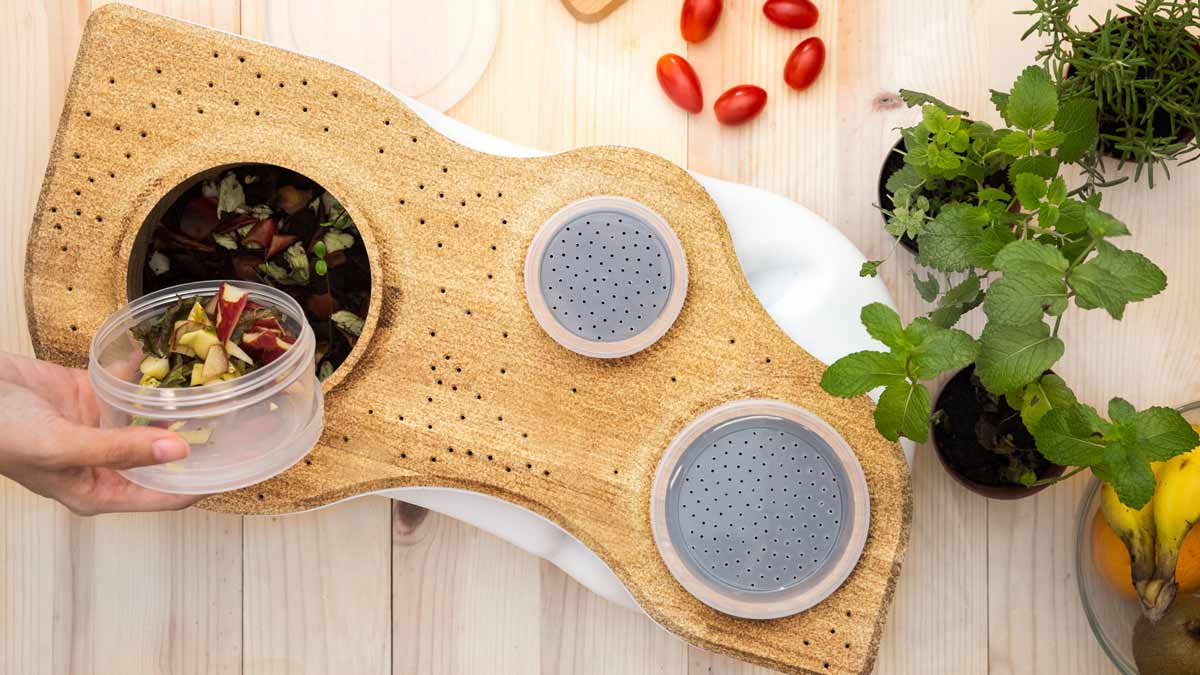How to Compost at Home

What It Comes With
• Plastic worm bin with cork lid
• 1-cup food-waste container
• Moisture/light/pH probe
• Compost scoop
• Spray bottle
Size: The bin measures 18x9x6 inches (width by depth by height), and the manufacturer recommends starting with 1 pound of red wigglers (about 1,000 worms, which costs about $56 from a worm farm). The small, compact container can hold about 2 gallons of compost and soil, and it easily fits on a countertop or shelf. The maximum amount of food waste per batch is 1 cup, no more than three to four times a week (depending on the rate your worms break down food). This might be enough for one person or a couple who doesn’t cook much, but it can’t handle much more than that.
Food mix: Worm feed needs to be around 50 percent food scraps and 50 percent fiber, such as leaves, coffee filters, and paper. The worms gobble up most fruits and vegetables, except citrus, onions, garlic, and other alliums, and also dine on plain bread, pasta, and rice. Meat and bones, dairy products, seasoned foods, and oil are no-no’s.
Convenience: This kit comes with more accessories than most, which could be encouraging for vermicompost beginners. A soil meter helps new users maintain the proper moisture, light, and pH levels for worms to thrive. (Once you get the hang of it, you should be able to assess the condition of your bin just by looking at it.) The hole where you add food waste is tight and forces it to be concentrated in one area. The worms broke down the waste more efficiently when food was spread out throughout the lower level, but this requires taking off the entire cork lid. The lid can also shrink, expand, or warp when the room temperature and humidity fluctuate, leaving gaps along the edges for worms to escape or bugs to enter, or making the lid difficult to remove.
Ick factor: There’s no spigot to remove excess liquid, although proper compost shouldn’t leach much liquid (a sign that you’re overfeeding the worms), according to Luis Chen, founder of Wormies Vermicompost, a food scrap pickup and worm composting company in Grand Rapids, Mich. If you accidentally overfeed them, the bin contents could get too wet, and there’s no way to drain out the excess liquid. The bin was mostly odorless, but fruit flies were a problem at times. The instructions don’t indicate any need for covering up the food scraps with bedding (moist newspaper), but not doing so resulted in fruit flies.
Compost quality: Anytime you’re using worms, you’re going to get high-quality compost with the highest amount of beneficial microorganisms in it, according to Chen. Because the composter is small, you can pull out handfuls at a time from the loft inside the bin and add it to the topsoil of your houseplants once a month or so.
Source link


